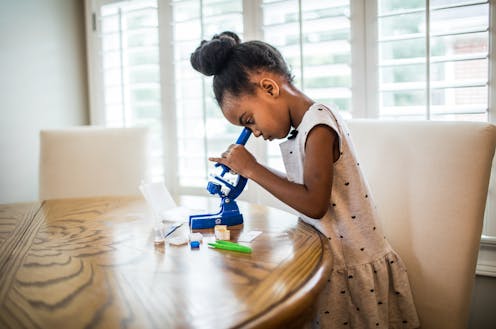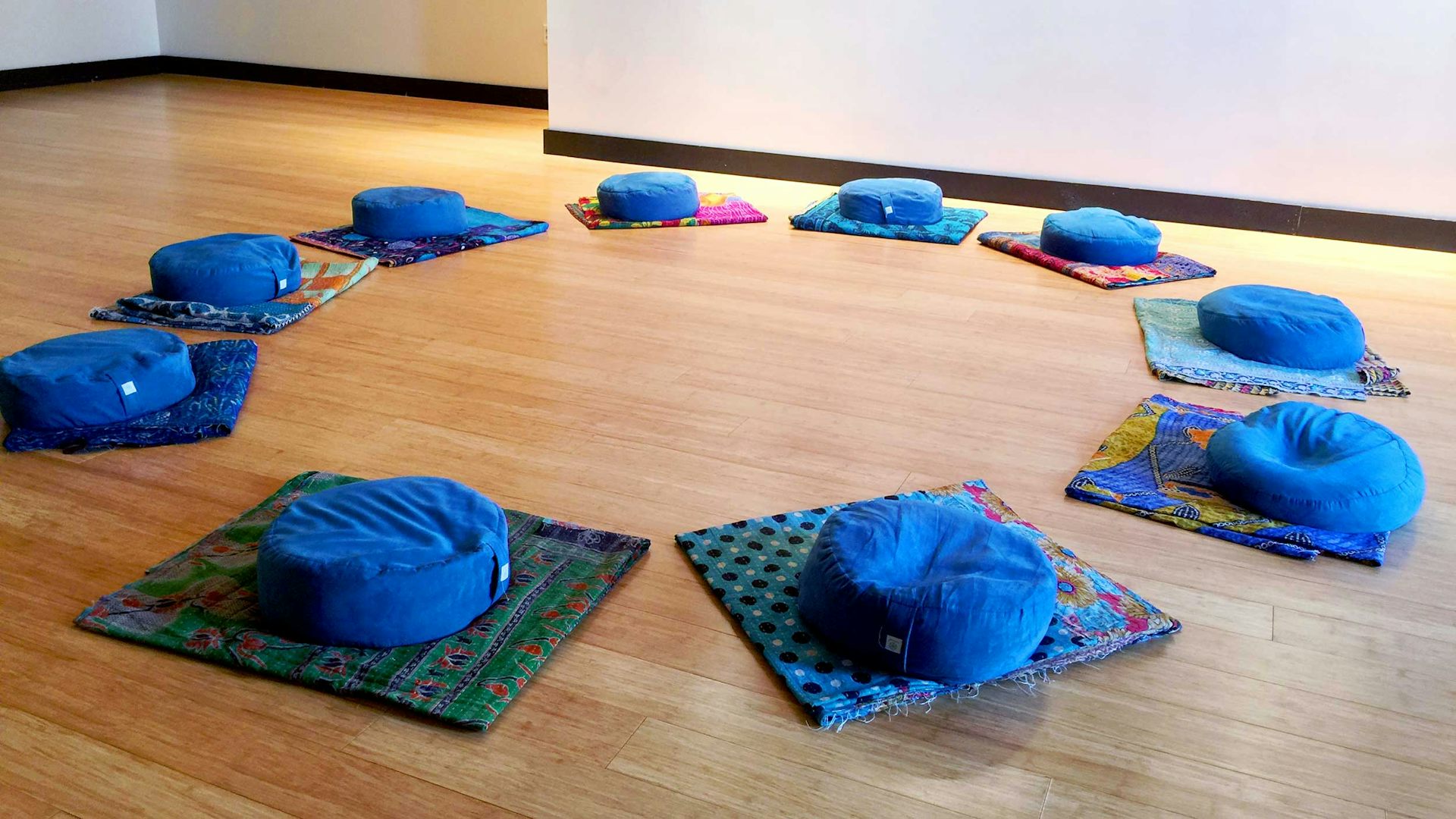Getting kids – and their caregivers – to practice STEM at home
A new hands-on learning program helps families with young children build their engineering skills.

The Research Brief is a short take about interesting academic work.
The big idea
Many educators, caregivers and students have been struggling with remote learning during the pandemic, especially the lack of hands-on learning experiences.
We developed and are trying out a hybrid approach – with on-screen and off-screen time – that helps children learn engineering design practices at home. Engineering design practices are the steps engineers take to design a solution to a problem. Our program encourages families to work on the activities together using household items like recyclables. For example, one family created a dog food dispenser using cardboard boxes and plastic bottles.
We developed and tested the new program with five families with children in grades 3-6. The activities relied on basic tools and materials – like cereal boxes and water bottles – that families already had in their homes. We held morning and evening online hours to fit families’ schedules, used familiar online platforms such as Zoom and maintained small group sizes. We found that the families developed a sense of community over the four-week period, demonstrating greater comfort in sharing and connecting as the program went on.
Caregivers said they appreciated the variety of activities and how the facilitator showed their own projects and talked about their failures. One participant said his children continued to use recyclable material to make things after the program ended. The one recommendation was to increase the online time as families felt that one hour flew by too quickly.
Why it matters
The pandemic has increased the number of at-home, online learning experiences, which could have negative long-term effects, such as mental health repercussions and a lower sense of school belonging for kids. As more caregivers are expected to assist students learning remotely, the accessible nature of our method of instruction provides a manageable model for at-home learning. It also helps families capitalize on the additional time they are spending together.
Furthermore, there’s a deficit of engineering content within elementary school STEM curriculum. Content at this level tends to focus on mastering math and science concepts. When engineering content is included, it is often part of an after-school program, a family night that happens once a year at school or a fun Friday activity. Teachers, too, are underequipped to support students’ understanding of engineering concepts and practices as few universities offer such training programs. As a result, young students aren’t developing an understanding of what engineers do or the skills they need to pursue a career in that field.
What still isn’t known
We can learn more about the benefits – to both children and caregivers – that may come from participating in such at-home STEM programs. For example, this way of connecting to other families facing similar educational challenges during a time of increased isolation might improve the social and emotional well-being and academic success of students. Greater incorporation of families and caregivers into students’ hands-on learning – in a manner that works with their unique contexts – may have longer-term benefits as well.
[Deep knowledge, daily. Sign up for The Conversation’s newsletter.]
We also don’t know how this format of engineering education might extend beyond the pandemic to regular classroom instruction and curriculum.
What’s next
Our team of researchers will begin working with more local families in the states of New York and Indiana beginning January 2021. We are developing engineering kits that will use low-cost items, such as cotton balls and conductive tape, and household and recyclable materials. Kits will include guides to help caregivers facilitate the engineering design process with their children. The goal is to develop families’ understanding of the design process before asking them to define a home or community problem and engineer a solution.
Amber M. Simpson receives funding from the National Science Foundation.
Peter N. Knox does not work for, consult, own shares in or receive funding from any company or organization that would benefit from this article, and has disclosed no relevant affiliations beyond their academic appointment.
Read These Next
West Coast levee failures show growing risks from America’s aging flood defenses
Levees protect more than 7 million buildings in the US today, yet they got a D-plus grade in 2025. A…
LA fires showed how much neighborliness matters for wildfire safety – schools can do much more to te
Managing fire risk is about more than regulations and rules. It’s also about caring for neighbors…
What loving-kindness meditation is and how to practice it in the new year
The practice of this meditation often involves quietly reciting to oneself several phrases that evoke…






